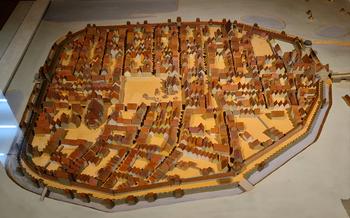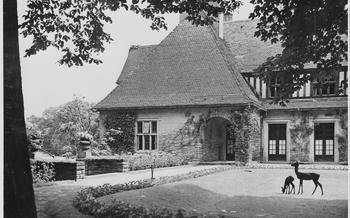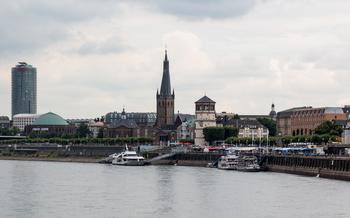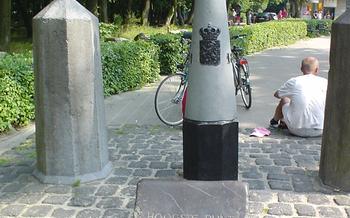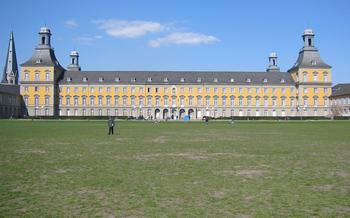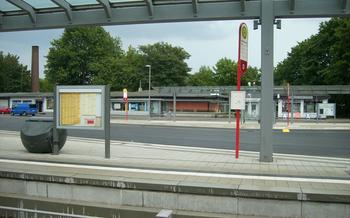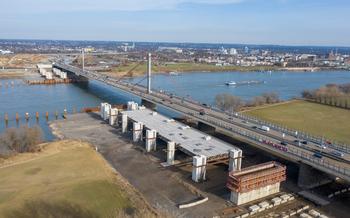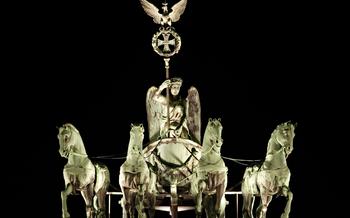
Drachenhöhle Syrau
- The Drachenhöhle Syrau: Unraveling the Secrets of the Dragon's Cave
- Discovering the Dragon's Cave
- The Legend of the Dragon: A Tale of Enchantment and Peril
- Exploring the Surrounding Area: Nature's Gems and Cultural Delights
- Tips for Visiting the Drachenhöhle Syrau
- The History of the Drachenhöhle Syrau
- The Geology of the Drachenhöhle Syrau
- The Flora and Fauna of the Drachenhöhle Syrau
- The Cultural Significance of the Drachenhöhle Syrau
- The Drachenhöhle Syrau in Modern Times
- The Drachenhöhle Syrau and Sustainability
The Drachenhöhle Syrau: Unraveling the Secrets of the Dragon's Cave
In the heart of Germany's Vogtland region, nestled amidst rolling hills and lush forests, lies a captivating natural wonder that beckons adventure-seekers and nature enthusiasts alike - the Drachenhöhle Syrau. Steeped in ancient legends and geological marvels, this enchanting cave promises an unforgettable and awe-inspiring journey into the depths of the earth.
A Unique and Enigmatic Realm
The Drachenhöhle Syrau is a labyrinthine system of underground chambers and tunnels, adorned with a dazzling array of stalactites, stalagmites, and otherworldly rock formations. Formed over millions of years by the relentless work of water seeping through the limestone bedrock, the cave's intricate and delicate structures create an ethereal and almost mystical atmosphere.
Conveniently Located for Exploration
Situated in the town of Syrau, just a short drive from the city of Plauen, the Drachenhöhle Syrau is easily accessible by car or public transportation. Ample parking is available for visitors, ensuring a hassle-free start to their subterranean adventure.
Affordable Access to a Subterranean Masterpiece
To step into the realm of the dragon's cave, visitors are required to purchase an entrance ticket. The admission fee is reasonably priced, making this natural wonder accessible to travelers of all budgets. Whether embarking on a spontaneous escapade or planning a family outing, the Drachenhöhle Syrau offers excellent value for an unforgettable experience.
Discovering the Dragon's Cave
Venturing into the Drachenhöhle Syrau is a truly awe-inspiring experience. As visitors descend into the depths of the cave, they are greeted by a breathtaking display of natural wonders. The cave's walls are adorned with intricate stalactites and stalagmites, which have been formed over millions of years by the slow dripping of water. The formations come in various shapes and sizes, creating a surreal and enchanting landscape.
The cave's most striking feature is its underground river, which flows through the chambers and adds to the mystical atmosphere. Visitors can walk along wooden walkways that wind alongside the river, offering a unique perspective of the cave's formations and the crystal-clear water. The sound of the flowing water and the dripping stalactites creates a soothing and immersive ambiance that transports visitors to a different world.
Exploring the Drachenhöhle Syrau is a journey through time and nature. The cave's formations tell the story of geological processes that have shaped the region over eons, while the underground river represents the continuous flow of life. The cave's unique ecosystem supports a variety of plants and animals, adding to its biodiversity and ecological significance.
A visit to the Drachenhöhle Syrau is an unforgettable experience that combines adventure, history, and natural beauty. Whether you are a nature enthusiast, a history buff, or simply looking for a unique and awe-inspiring destination, the Drachenhöhle Syrau is a must-see attraction in Germany.
The Legend of the Dragon: A Tale of Enchantment and Peril
The Drachenhöhle Syrau is steeped in an intriguing legend that has captivated the imaginations of visitors for centuries. According to local folklore, the cave was once the dwelling of a fearsome dragon named "Fafnir." Fafnir was a greedy and possessive creature, said to have guarded a vast treasure within the cave's depths.
The legend tells of a brave knight named Siegfried who embarked on a perilous quest to slay the dragon and claim its treasure. After a fierce battle, Siegfried emerged victorious, vanquishing the fearsome beast and liberating its hoard of gold and jewels.
It is believed that the dragon's spirit still lingers within the cave, protecting its hidden riches. Some say that on quiet evenings, one can hear the faint echoes of the dragon's roars, a haunting reminder of its former presence.
Over time, the legend of the dragon has become deeply intertwined with the identity of the Drachenhöhle Syrau. It serves as a reminder of the power of bravery and the allure of hidden treasures, capturing the imaginations of visitors and locals alike.
Exploring the Surrounding Area: Nature's Gems and Cultural Delights
Beyond the captivating depths of the Drachenhöhle Syrau, a wealth of natural and cultural attractions awaits discovery. Immerse yourself in the picturesque landscapes of the Ore Mountains Nature Park, a haven for outdoor enthusiasts. Embark on invigorating hikes along well-marked trails, marveling at the panoramic vistas that unfold before you. Nature lovers can revel in the park's diverse flora and fauna, spotting rare bird species and encountering friendly wildlife.
For those seeking a more leisurely experience, scenic bike paths meander through the countryside, offering a tranquil escape amidst serene surroundings. Pedal past idyllic villages, lush meadows, and sparkling streams, soaking in the region's rustic charm.
Enrich your journey with a visit to the nearby town of Syrau, steeped in history and cultural heritage. Explore its charming streets, lined with well-preserved timber-framed houses that speak to the town's rich past. Delve into the town's history at the Syrau Heimatmuseum, where captivating exhibits showcase the region's traditions, industries, and way of life.
Satisfy your culinary cravings with a delectable meal at one of the local restaurants, savoring regional specialties prepared with fresh, local ingredients. Indulge in hearty dishes that reflect the culinary heritage of the region, accompanied by a refreshing glass of local beer or wine.
To make the most of your visit, consider planning a day trip or weekend getaway. Immerse yourself in the region's beauty, exploring the Drachenhöhle Syrau and its surrounding attractions at your own pace. Whether you seek adventure, tranquility, or cultural enrichment, the area offers a harmonious blend of experiences that will leave you with lasting memories.
Tips for Visiting the Drachenhöhle Syrau
Best Time to Visit: The Drachenhöhle Syrau is open year-round, but the best time to visit is during the spring or fall when the weather is mild and pleasant. In the summer, the cave can get crowded with tourists, and in the winter, it can be quite cold and icy.
What to Wear and Bring: Wear comfortable shoes and clothing suitable for walking on uneven surfaces. The cave can be chilly, so a light jacket or sweater is recommended. Bring a camera to capture the stunning sights inside the cave.
Age Restrictions and Accessibility: The cave is accessible to visitors of all ages, but children under the age of 6 must be accompanied by an adult. The cave is not wheelchair accessible due to the uneven terrain and narrow passages.
Special Events and Activities: The Drachenhöhle Syrau hosts various special events and activities throughout the year, such as guided night tours, concerts, and educational workshops. Check the cave's website or contact them directly for more information.
The History of the Drachenhöhle Syrau
The Drachenhöhle Syrau has a rich and fascinating history. It was first discovered in 1678 by a group of miners who were working in the nearby silver mines. The miners were digging a new shaft when they came across a narrow passage that led them into a vast underground chamber. Inside the chamber, they found a collection of dragon bones, which they believed belonged to the dragon that had once terrorized the region.
The discovery of the dragon bones caused a great deal of excitement, and the cave quickly became a popular tourist destination. In the 18th century, the cave was visited by several famous figures, including Johann Wolfgang von Goethe and Alexander von Humboldt.
In the 19th century, the Drachenhöhle Syrau was used as a hospital for wounded soldiers during the Napoleonic Wars. The cave's cool, damp air was believed to be beneficial for the soldiers' health, and many of them recovered from their injuries while staying in the cave.
During World War II, the Drachenhöhle Syrau was used as a bomb shelter by the local population. The cave's thick walls and remote location made it an ideal hiding place, and many people sought refuge in the cave during the war.
After the war, the Drachenhöhle Syrau was reopened to the public. It is now one of the most popular tourist attractions in the Vogtland region, and it continues to draw visitors from all over the world.
The Geology of the Drachenhöhle Syrau
The Drachenhöhle Syrau is a natural wonder formed over millions of years by the erosive power of water. The cave is composed of Devonian limestone, a sedimentary rock formed from the accumulation of marine organisms and minerals. The limestone was deposited in layers, and over time, water seeped into the rock and dissolved the soluble minerals, creating cavities and tunnels.
The cave's unique geological features include stalactites, stalagmites, and flowstones. Stalactites are formed when water seeps through the ceiling of the cave and drips onto the floor, leaving behind mineral deposits that build up over time. Stalagmites are formed when water drips from the floor of the cave and accumulates on the ground, creating upward-growing columns. Flowstones are formed when water flows over the cave walls, leaving behind a thin layer of mineral deposits.
The Drachenhöhle Syrau is part of a larger karst system, which is an area of soluble rock that has been eroded by water. The karst system includes other caves, sinkholes, and underground rivers. The cave's geology is significant because it provides insights into the geological history of the region and the processes that have shaped the landscape.
Ongoing research and conservation efforts are focused on understanding the cave's formation, preserving its unique geological features, and protecting its delicate ecosystem. Scientists are studying the cave's speleothems, which are mineral deposits that form in caves, to learn more about the cave's history and environment. Conservationists are working to protect the cave from human impact and ensure its long-term preservation.
The Flora and Fauna of the Drachenhöhle Syrau
The Drachenhöhle Syrau is home to a diverse array of flora and fauna, both inside and outside the cave. The cave's unique microclimate and geological formations have created a habitat for a variety of specialized plants and animals.
Inside the cave, visitors may encounter various species of bats, including the Greater Mouse-eared Bat, the Lesser Horseshoe Bat, and the Natterer's Bat. These bats play a crucial role in the cave's ecosystem by controlling insect populations and contributing to nutrient cycling.
The cave's walls and ceilings are adorned with a variety of mosses, ferns, and liverworts, which thrive in the humid and shaded environment. These plants add to the cave's beauty and provide a food source for various invertebrates.
Outside the cave, the surrounding forest is home to a variety of tree species, including beech, oak, and maple trees. The understory is rich with wildflowers, ferns, and shrubs, providing habitat for a variety of birds, insects, and small mammals.
The Drachenhöhle Syrau is also home to several rare and endangered species, including the European fire salamander, the Bechstein's bat, and the Western Barbastelle bat. These species are protected by law, and their presence in the cave highlights the importance of conservation efforts.
To protect the cave's delicate ecosystem, visitors are asked to refrain from disturbing the flora and fauna. By following the guidelines and respecting the natural environment, visitors can help ensure the long-term preservation of this unique and fragile habitat.
The Cultural Significance of the Drachenhöhle Syrau
The Drachenhöhle Syrau holds immense cultural significance, deeply interwoven with the local folklore and traditions of the region. The cave has inspired countless myths, legends, and stories that have been passed down through generations. One of the most prominent legends is the tale of the fearsome dragon that once resided in the cave, guarding its hidden treasures and terrorizing the surrounding villages.
The dragon, known as the "Drache von Syrau," is a central figure in local folklore. It is depicted as a powerful and menacing creature, with scales as hard as diamonds and a fiery breath that could incinerate anything in its path. The legend narrates the heroic battle between a brave knight and the dragon, culminating in the knight's victory and the liberation of the villagers from the dragon's tyranny.
Beyond the dragon legend, the Drachenhöhle Syrau has also served as a muse for artists, writers, and musicians. The cave's eerie beauty and captivating history have found their way into works of art, literature, and music, immortalizing the cave's legacy in the cultural tapestry of the region.
To this day, the Drachenhöhle Syrau remains a source of cultural pride for the local community. It is a place where history, folklore, and imagination intertwine, creating a unique and captivating experience for visitors who come to explore its depths.
The Drachenhöhle Syrau in Modern Times
In recent years, the Drachenhöhle Syrau has undergone significant development to enhance its accessibility and appeal to visitors. The cave has been equipped with modern amenities such as lighting, paved walkways, and handrails to ensure a safe and comfortable experience for all. Visitors can embark on guided tours led by knowledgeable guides who share fascinating insights into the cave's history, geology, and legends.
Additionally, the Drachenhöhle Syrau has embraced educational initiatives to promote awareness and appreciation for its unique natural and cultural heritage. Educational programs and workshops are offered for students, families, and groups to learn about the cave's geology, ecology, and cultural significance. These programs aim to inspire future generations of explorers and conservationists.
To ensure the long-term preservation and sustainability of the Drachenhöhle Syrau, comprehensive management strategies have been implemented. The cave's delicate ecosystem is closely monitored, and measures are taken to minimize the impact of tourism on the environment. Visitors are encouraged to follow responsible practices, such as staying on designated paths and avoiding disturbing the cave's natural features.
Through these modern developments and sustainable practices, the Drachenhöhle Syrau continues to captivate visitors while preserving its natural wonders for generations to come.
The Drachenhöhle Syrau and Sustainability
The Drachenhöhle Syrau is committed to minimizing its environmental impact and promoting sustainable tourism practices. The cave has implemented several eco-friendly initiatives, including:
-
Energy Efficiency: The cave uses energy-efficient lighting and heating systems to reduce its energy consumption.
-
Waste Management: The cave has a comprehensive waste management program in place, including recycling and composting initiatives.
-
Water Conservation: The cave has installed water-saving fixtures and practices to reduce water usage.
-
Sustainable Transportation: The cave encourages visitors to use public transportation or carpooling to reduce carbon emissions.
Visitors to the Drachenhöhle Syrau can contribute to sustainable tourism by:
-
Using Public Transportation: Taking the bus or train to the cave helps reduce traffic congestion and pollution.
-
Reducing Plastic Waste: Bringing reusable water bottles and avoiding single-use plastics helps minimize waste.
-
Respecting the Environment: Staying on designated trails and avoiding disturbing the natural habitat helps protect the cave's ecosystem.
The Drachenhöhle Syrau also offers educational programs and workshops on sustainability and conservation. These programs teach visitors about the importance of protecting the environment and how they can make a positive impact.
